White currants are much less common than black or red ones. And few people know that white berries contain a lot of vitamins C, A, E and P, and vital acids. They are much sweeter and more fragrant than their relatives; the advantage of white currant varieties is also their low content of allergens; they can be consumed by adults and children prone to allergic reactions.
Light berries help with colds, inflammation of the bladder, hypertension, rheumatism, urolithiasis, cardiovascular diseases and excess weight. These fruits help to quickly burn fat and improve metabolism; they are used to make compotes, fruit drinks, jelly, and jam. Today we will look at the most popular varieties of white currants.
If you are planning to go to the market for white currant seedlings, then you should ask the sellers:
- What kind of harvest can you expect?
- Is this variety frost-resistant enough?
- How susceptible is he to disease?
The best varieties of white currants for the Moscow region.
The following varieties of white currant take root best in the Moscow region:
- Belyan
- Boulogne white
- Dessert
- Minusinsk white
- Ural white.
Belyan
Belyan - this berry has a taste advantage over other varieties of white currant and, according to tasters, is considered the most pleasant to the taste. The color of the berries is light yellow, the clusters are almost transparent, dense, of medium length, hanging down. The currant is frost-resistant and has proven itself well in the middle zone and the Moscow region.
- Productivity - up to 4 kg. berries from 1 bush
- Weight of berries - 0.6 to 1.5 g.
- Refers to varieties of medium ripening
- It is drought-resistant, tolerates cold winters down to -34 degrees.
Advantages: drought-resistant, frost-resistant, tasty.
Flaws: The berries have thin skin and may become wrinkled during transportation; it is better to process them on site.
Boulogne
Boulogne - mid-early ripening, the bushes are relatively low, dense, and tolerate dense planting well. The berries are round, cream-colored, with delicate sweet and sour pulp.
- Productivity reaches 3-4 kg. berries from 1 bush
- Weight of berries is from 0.7 to 0.9 g.
- Ripening - mid-July
Advantages: good sweet and sour taste, high yield
Flaws: requires protection from anthracnose, does not tolerate severe frosts
Dessert
Dessert - this variety of white currant takes root well throughout Russia, tolerates frost, and produces a good harvest. Thanks to its powerful root system, it can get by with infrequent watering. Not susceptible to fungal diseases.
- Productivity – high up to 6 kg from 1 bush
- Weight of berries - 1-1.2 g.
- Early ripening
Advantages: you can make compotes, jelly, fruit drinks and freeze for the winter, frost-resistant, resistant to fungal diseases.
Minusinsk white
Minusinsk white — the berry has a good taste (4.6 points), but not the highest yield. The average harvest per bush is about 3 kilograms. The fruits are yellowish and have thin skin. It tolerates cold well, is drought-resistant, was bred for Eastern Siberia, but grows and bears fruit well in the Moscow region. Resistant to powdery mildew and aphids.
- Productivity - 2.5 kg per bush
- Weight of berries - 0.8-1 g.
- Medium ripening
Advantages: good winter hardiness, disease resistant
Flaws: large seeds in berries.
Ural white
Ural white - a frost-resistant variety of white currant. The bushes are low, dense, and the yield is good. The berries have a pleasant delicate taste. It withstands any bad weather, including frost. Self-pollinating variety.
- Productivity - up to 6 kg per bush
- Weight of berries - 1.1 g.
- Maturation - early period
Advantages: not picky in care, ideal for planting in the Moscow region and Volga region, has high frost resistance
Flaws: With infrequent watering, over time, the berries become smaller in size.
Description of the best varieties of white currants
English white
English white - the variety has proven itself well in central Russia and the Moscow region. Not picky about care. The bushes are small, the berries are round and large like balls, with a refreshing sweet and sour taste.
- Productivity - 4-6 kg. berries from one bush
- Weight of berries - 1.1 g.
- Early ripening
Advantages: tolerates frost well, fruits are quite large in size.
Flaws: low self-fertility, affected by anthracnose.
White squirrel
White squirrel — a frost-resistant variety, not susceptible to diseases, begins to bear fruit already from the second year after planting, and is characterized by stable fruiting.
- Productivity - 4.5 kg per bush
- Weight of berries - 0.5-1 g.
- Medium early ripening
Advantages: tolerates frost well, is practically not affected by powdery mildew and anthracnose.
White belyana
White belyana is a frost-resistant variety of white currant that tolerates drought well. The bushes are low, slightly spreading. The berries are slightly oval, with thin, delicate skin, and do not tolerate transportation well, but the taste is excellent - 5 points. The harvest ripens in mid-summer.
- Productivity - up to 4 kg from 1 bush
- Weight of berries - 0.8-1.5 g.
- Maturation - average
Advantages: good winter hardiness, self-fertility, wonderful taste of berries.
Flaws: May be affected by anthracnose
White grapes
White grapes are a mid-season variety of white currants that are not afraid of long and cold winters and tolerate drought quite well. The bush is compact, the berries are round, large, transparent with a yellow tint. The separation is dry. The taste is sweet, dessert.
- Productivity - 4 kg from 1 bush
- Weight of berries - 0.8-1 g.
- Maturation - average
Advantages: not afraid of spring frosts.
Flaws: low self-fertility
Belaya Potapenko
White Potapenko - the variety has good survival rate and is suitable for planting in areas with cold climates. It is almost not affected by diseases. The bush is small and stunted. The berries are white-yellow in color and taste sweet and sour.
- Productivity - 5.8t/ha
- Weight of berries - 0.5-0.8 g.
- Maturation: mid-early
Advantages: early fruiting, excellent taste of fruits that hang on the branches for a long time after ripening.
Flaws: - average yield
White fairy
White Fairy is the leading variety among white-fruited currants. Tolerates dry summers well. The shape of the fruit is round. The bush is slightly spreading, the branches are thick and of medium length. The berries are of different sizes, mostly large, weighing from 0.8 to 2 grams. It has a white color with a yellow tint. Opened dry. The taste is sweet and sour, has no smell.
- Productivity - 5.2 kg per bush
- Weight of berries - 0.8-2 g
- Ripening - mid-July
Advantages: self-pollinating, produces a good harvest every year, tolerates transportation well, good for dessert
Versailles white
White Versailles is perhaps the most famous and widespread variety of white currant. It is distinguished by consistently good yields and tasty, large berries. The plant is unpretentious, easily tolerates heat and drought, but can freeze in frosty winters. The bushes grow up to one and a half meters. The berries are one-dimensional, large, sweet and sour in taste. It begins to bear fruit in the fourth year.
- Productivity - 4-4.5 kg per bush
- Weight of berries - 0.7-1.3 g.
- Ripens in late July - early August.
Advantages: not affected by powdery mildew, easy to care for.
Flaws: affected by anthracnose.
Dutch white
Dutch white - this variety ripens quite early, has an average yield, and easily tolerates frost. The bush is small, medium spreading.The berries are medium-sized, cream-colored, very juicy. The separation is wet. The fruits have a sweet and sour taste.
- Productivity - 4-5 kg from 1 bush
- Weight of berries - 0.7-0.8 g.
- Early ripening
Advantages: easy to care for, self-fertile, resistant to anthracnose.
Dessert
Dessert - this variety ripens early and has high yield. Resistant to frost and adverse weather conditions. The variety is resistant to various diseases. The bush is not large, but the berries are large, round, transparent, and have a yellow-pink tint. The taste is sweet with sourness.
- Productivity - up to 6 kg from 1 bush
- Weight of berries - 1.2 g.
- Early ripening
Advantages: large currant, tolerates adverse weather conditions well
Cream
Cream - this variety of white currant takes root well in the Central Black Earth region and, with proper care, produces an excellent harvest. The berries are large, cream-colored, thin-skinned and sweet and sour in taste. The bushes are medium in size and may freeze in cold winters.
- Productivity - up to 6 kg from 1 bush
- Weight of berries - 0.9 g.
- Early ripening.
Advantages: large fruit size, almost not affected by diseases, high yield
Flaws: does not tolerate frost well, skin is too thin
Primus
Primus is a variety bred in the Czech Republic. It is characterized by high yield, good winter hardiness and resistance to almost all diseases. The bush is erect, compact. The berries do not fall off for a long time after ripening.
- Productivity - up to 10 kg from 1 bush
- Weight of berries -1 g.
- Ripens in early to mid July.
Advantages: winter-hardy, high-yielding variety, resistant to gall aphids and anthracnose.
Jumping
Prygazhunya - this variety was bred in Belarus by crossing the Red Cross, Cherry and White grape varieties. Medium sized bush. Productivity is high. Tolerates severe frosts and spring frosts well. The berries are round, pink in color and taste sweet and sour.
- Productivity - 15 t/ha
- Weight of berries - 0.7-0.9 g.
- Medium ripening
Advantages: good yield, winter hardiness
Flaws: affected by leaf spots.
Smolyaninovskaya
Smolyaninovskaya white - suitable for planting in the climatic conditions of the Central and Far Eastern regions of the Russian Federation. It belongs to fast-growing plants; over the summer, branches can grow by 30 cm or more, because of this the crown quickly thickens and requires frequent thinning. The berries are transparent, round and taste sweet and sour.
- Productivity - 6.2 kg. from 1 bush
- Weight of berries - 0.7-1 g.
- Medium early ripening
Advantages: frost resistance down to -30 degrees, high yield, good taste.
Flaws: medium resistance to pests, requires regular pruning.
Jüterborg
Yuterborgskaya - this Western European variety is approved for cultivation in the North-Western and East Siberian regions. Mid-season variety of white currant. It tolerates drought easily, but has poor resistance to anthracnose. The bush is dense and low. The berries are medium and large, cream-colored, and have a sweet, delicate taste.
- Productivity - 7-8 kg. from 1 bush
- Weight of berries - 0.7-1 g.
- Medium early ripening.
Advantages: It tolerates heat well, has high yields, and the fruits do not fall off for a long time after ripening.
Flaws: weak resistance to anthracnose.
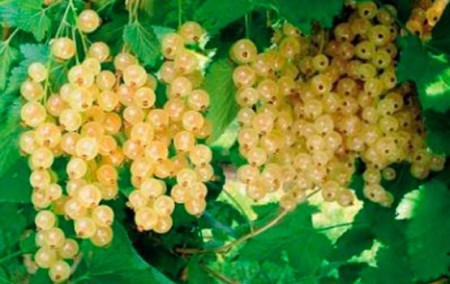

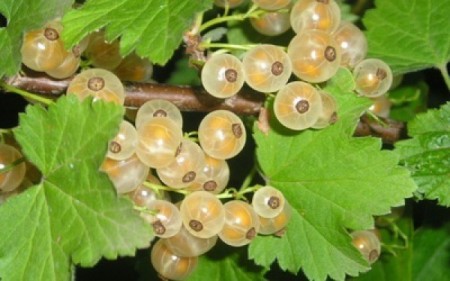
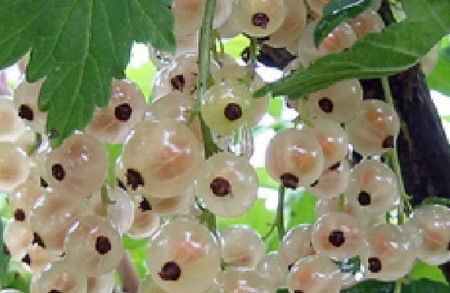
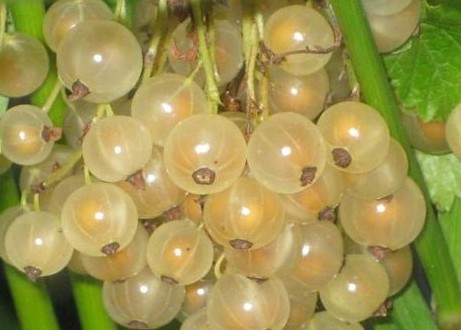
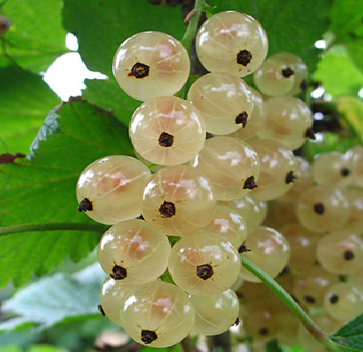
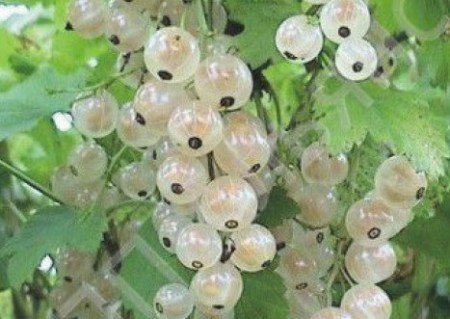
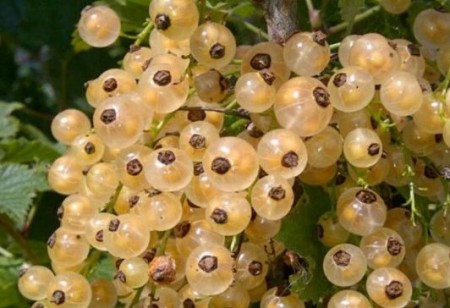
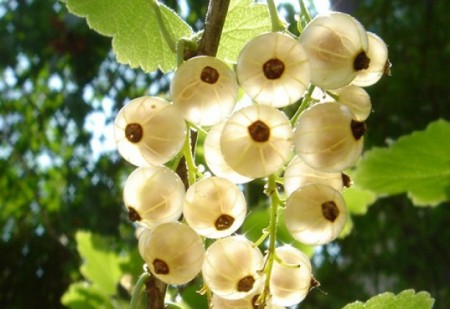
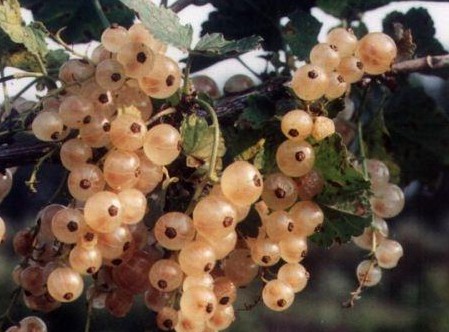
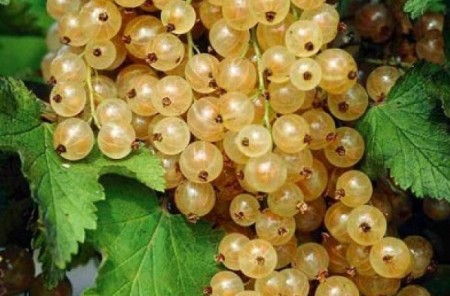
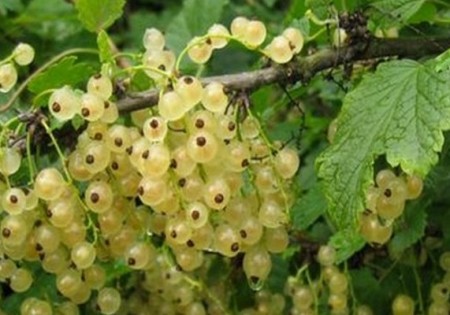
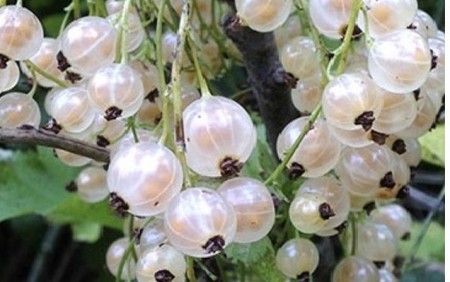
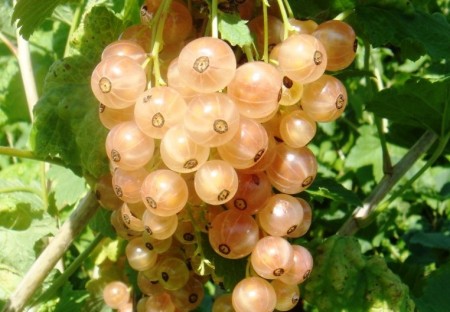
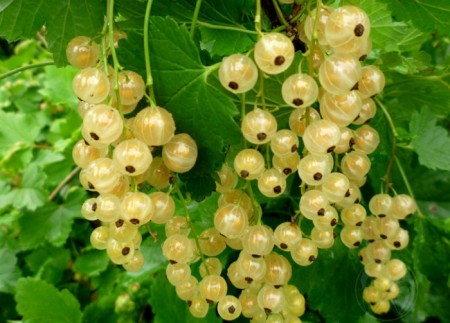
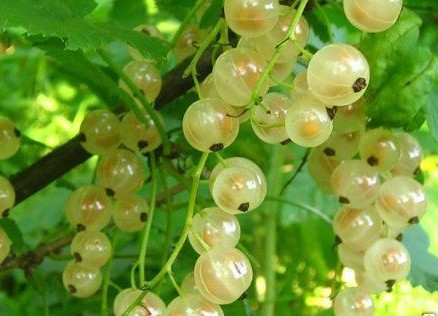
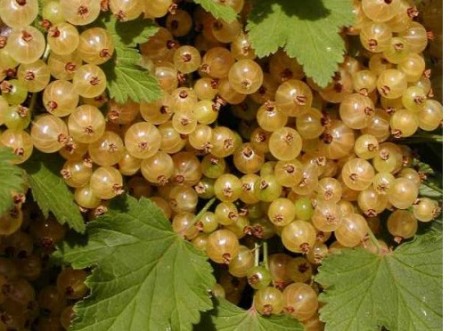
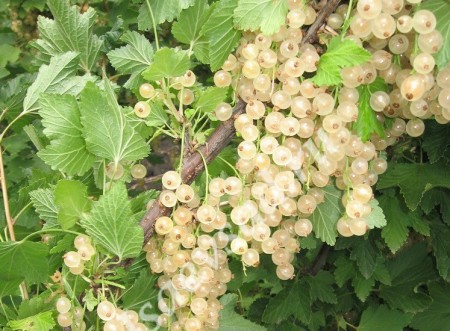
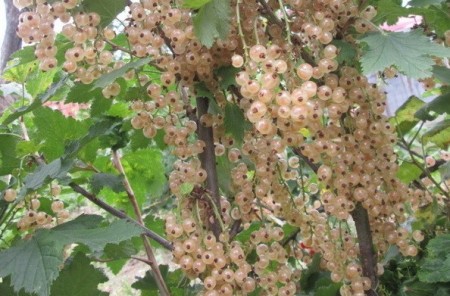

 (7 ratings, average: 4,43 out of 5)
(7 ratings, average: 4,43 out of 5) CUCUMBERS NEVER GET SICK, I'VE BEEN USING ONLY THIS FOR 40 YEARS! I SHARE A SECRET WITH YOU, CUCUMBERS ARE LIKE THE PICTURE!
CUCUMBERS NEVER GET SICK, I'VE BEEN USING ONLY THIS FOR 40 YEARS! I SHARE A SECRET WITH YOU, CUCUMBERS ARE LIKE THE PICTURE! You can dig a bucket of potatoes from each bush. Do you think these are fairy tales? Watch the video
You can dig a bucket of potatoes from each bush. Do you think these are fairy tales? Watch the video
 How our fellow gardeners work in Korea. There is a lot to learn and just fun to watch.
How our fellow gardeners work in Korea. There is a lot to learn and just fun to watch. Eye trainer. The author claims that with daily viewing, vision is restored. They don't charge money for views.
Eye trainer. The author claims that with daily viewing, vision is restored. They don't charge money for views. A 3-ingredient cake recipe in 30 minutes is better than Napoleon. Simple and very tasty.
A 3-ingredient cake recipe in 30 minutes is better than Napoleon. Simple and very tasty. Therapeutic exercises for cervical osteochondrosis. A complete set of exercises.
Therapeutic exercises for cervical osteochondrosis. A complete set of exercises. Which indoor plants match your zodiac sign?
Which indoor plants match your zodiac sign? What about them? Excursion to German dachas.
What about them? Excursion to German dachas.